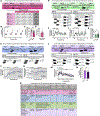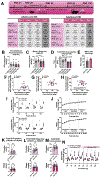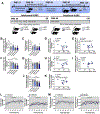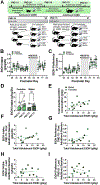Voluntary adolescent alcohol exposure does not robustly increase adulthood consumption of alcohol in multiple mouse and rat models
- PMID: 40375980
- PMCID: PMC12080272
- DOI: 10.1016/j.addicn.2024.100171
Voluntary adolescent alcohol exposure does not robustly increase adulthood consumption of alcohol in multiple mouse and rat models
Abstract
Adolescence is a period of increased risk taking, including increased alcohol and drug use. Multiple clinical studies report a positive relationship between adolescent alcohol consumption and risk of developing an alcohol use disorder (AUD) in adulthood. However, few preclinical studies have attempted to tease apart the biological contributions of adolescent alcohol exposure, independent of other social, environmental, and stress factors, and studies that have been conducted show mixed results. Here we use several adolescent voluntary consumption of alcohol models, conducted across four labs in three institutes and with two rodent species, to investigate the ramifications of adolescent alcohol consumption on adulthood alcohol consumption in controlled, pre-clinical environments. We consistently demonstrate a lack of robust increases in adulthood alcohol consumption. This work highlights that risks seen in both human datasets and other murine drinking models may be due to unique social and environmental factors - some of which may be unique to humans.
Keywords: Adolescent alcohol; Alcohol use disorder; Behavior; Development; Ethanol; Rodent models.
Conflict of interest statement
Declaration of competing interest none
Figures






Update of
-
Voluntary adolescent alcohol exposure does not robustly increase adulthood consumption of alcohol in multiple mouse and rat models.bioRxiv [Preprint]. 2024 Jul 21:2024.04.30.591674. doi: 10.1101/2024.04.30.591674. bioRxiv. 2024. Update in: Addict Neurosci. 2024 Sep;12:100171. doi: 10.1016/j.addicn.2024.100171. PMID: 38746266 Free PMC article. Updated. Preprint.
Similar articles
-
Voluntary adolescent alcohol exposure does not robustly increase adulthood consumption of alcohol in multiple mouse and rat models.bioRxiv [Preprint]. 2024 Jul 21:2024.04.30.591674. doi: 10.1101/2024.04.30.591674. bioRxiv. 2024. Update in: Addict Neurosci. 2024 Sep;12:100171. doi: 10.1016/j.addicn.2024.100171. PMID: 38746266 Free PMC article. Updated. Preprint.
-
Gender and age at drinking onset affect voluntary alcohol consumption but neither the alcohol deprivation effect nor the response to stress in mice.Alcohol Clin Exp Res. 2008 Dec;32(12):2100-6. doi: 10.1111/j.1530-0277.2008.00798.x. Epub 2008 Sep 25. Alcohol Clin Exp Res. 2008. PMID: 18828803
-
Alcohol drinking during adolescence increases consumptive responses to alcohol in adulthood in Wistar rats.Alcohol. 2017 Mar;59:43-51. doi: 10.1016/j.alcohol.2016.12.002. Epub 2017 Feb 7. Alcohol. 2017. PMID: 28187948 Free PMC article.
-
Targeting Persistent Changes in Neuroimmune and Epigenetic Signaling in Adolescent Drinking to Treat Alcohol Use Disorder in Adulthood.Pharmacol Rev. 2023 Mar;75(2):380-396. doi: 10.1124/pharmrev.122.000710. Epub 2022 Dec 12. Pharmacol Rev. 2023. PMID: 36781218 Free PMC article. Review.
-
Epigenetic regulation of microglia and neurons by proinflammatory signaling following adolescent intermittent ethanol (AIE) exposure and in human AUD.Adv Drug Alcohol Res. 2024 Mar 8;4:12094. doi: 10.3389/adar.2024.12094. eCollection 2024. Adv Drug Alcohol Res. 2024. PMID: 38524847 Free PMC article. Review.
Cited by
-
Adolescent alcohol consumption alters sex-specific behaviors associated with prefrontal functional connectivity in mice.bioRxiv [Preprint]. 2025 Jun 8:2025.06.05.658112. doi: 10.1101/2025.06.05.658112. bioRxiv. 2025. PMID: 40661634 Free PMC article. Preprint.
References
-
- Addolorato G, Vassallo GA, Antonelli G, Antonelli M, Tarli C, Mirijello A, Agyei-Nkansah A, Mentella MC, Ferrarese D, Mora V, Barbàra M, Maida M, Cammà C, Gasbarrini A, Binge drinking among adolescents is related to the development of alcohol use disorders: results from a cross-sectional study, Sci. Rep. 8 (2018) 12624, 10.1038/s41598-018-29311-y. - DOI - PMC - PubMed
Grants and funding
LinkOut - more resources
Full Text Sources
Molecular Biology Databases
